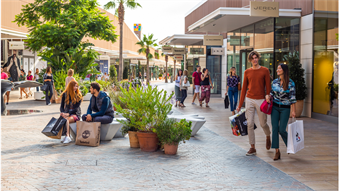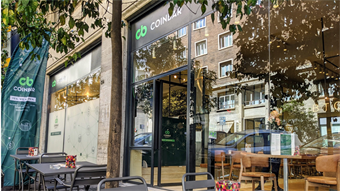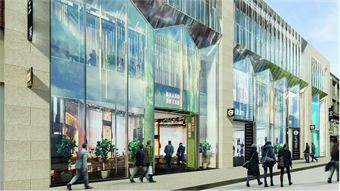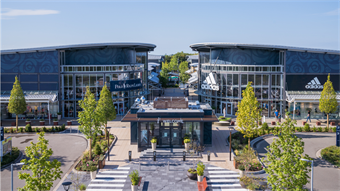Atrium’s strategy for success
- In Strategy
- 12:50, 03 december 2019
- 1898 Views
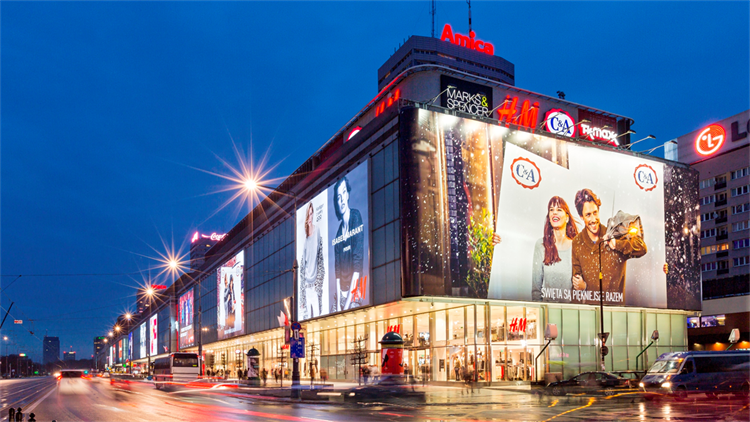
CEE-focused Atrium European Real Estate has stayed nimble in a changing retail universe by focusing on key city targets, managing the evolution of its centres, and above all, working out what customers want.
The fast-changing world of shopping centres requires a dynamic strategy to stay ahead of the pack. CEE shopping centre specialist Atrium European Real Estate has deftly shaped its portfolio in recent years to focus on the key markets of Warsaw and Prague, while rolling out an ongoing refurbishment programme to keep its prime malls in pole position.
This year, shareholder Gazit Globe underlined its faith in Atrium’s approach with a take-private bid for the firm, signalling the next, dynamic chapter in the company’s story.
‘For a number of years, Atrium’s ongoing strategy has been to reposition our portfolio towards large, high-quality dominant retail centres in prime urban locations and capital cities,’ says Liad Barzilai, Group CEO, Atrium European Real Estate.
‘As a result of recent activity, 83% of our portfolio is now focused on the two strongest economies in Central Europe, Poland and the Czech Republic. And, importantly, over 50% is in central locations in the capital cities of Warsaw and Prague, while at the same time completing our exit from Romania and Hungary last year.
‘In addition, we have undertaken a substantial amount of development and refurbishment at many of our malls, adding entertainment and leisure areas, such as food courts, cinemas and other activities. This has allowed us to turn them into real leisure destinations which increases visitor numbers and promotes retail spend.’
The Warsaw factor
According to Barzilai, the continuing focus on Warsaw has resulted in an ongoing acquisitions campaign. ‘In October 2018, we were very pleased to acquire Wars Sawa Junior, a prime high-footfall retail asset in a location in the heart of Warsaw, which enjoys around 60 million visitors in and around the asset annually. More recently we also acquired the smaller King Cross Praga retail centre in Warsaw, which we believe has great potential.’
Barzilai adds: ‘We’ll continue to follow a strategy that looks to dominant schemes in good locations in built-up areas.’
The Atrium chief notes that the Polish capital has a unique set of characteristics that fit with the Atrium approach. ‘Warsaw is a strong, growing city that is really benefitting from the wider trend of urbanisation that is driving growth in many capital cities. It has a well-educated, industrious and ambitious population.
Like Prague, the other city that is central to our strategy, Warsaw also enjoys low unemployment rates which supports income growth at our assets.’
Referencing the most recent deal in the city, he says: ‘Wars Sawa Junior is a Warsaw icon that is located in the city’s busiest high street. The area is also set to benefit from a number of local developments offering both cultural attractions and new office space, which will attract even more visitors. While we cannot go into too much detail at this stage as we have not owned the centre for long, there are a number of exciting development opportunities that we have identified to fully unlock its potential while respecting the historical legacy of the asset. It is, most definitely, one of our crown jewels.’
Fit for the future
As e-commerce and other means of direct sale alter the state of the retail industry, Atrium is facing market changes with a dynamic approach. ‘Atrium has been concentrating its strategy on the best densely populated locations in major cities with the highest demographic growth now and forecasted for the next years,’ Barzilai explains.
‘Of equal importance to reshaping the whole portfolio is concentrating on the specific details of each shopping centre; capturing new trends, responding to new ways of life and focusing on the expectations and “wants” of the immediate local communities.’
A big aspect of this is keeping centres ‘fresh’ with development drives. ‘Redevelopments and enlargements of our centres gives the opportunity to implement new retailer concepts such as the only new Carrefour concept in Europe that incorporates a live cooking dining area and digitalised grocery shopping, as well as more broadly spaces for click and collect or drive through shopping,’ says Barzilai.
‘We are also increasingly looking to work with online retailers that are looking for a bricks-and-mortar presence to find them a home in our centres. New food and socialising spaces – the #foodertainment trend – are also an important part of the mix, as if having a rolling programme of pop-up offers and cooperation with young so-called Instagram-born brands. We strive to ensure that for our customers our centres are next in line after home and work in order of importance,’ he adds.
‘But we won’t stop there, we want to keep one step ahead and to achieve this are in the process of shifting our emphasis mindset from one of asset management to one of venue management. We no longer manage just shopping centres – they are rather experiential venues that present well on social media, respond to social trends and act as a focal point for people’s social lives.’
Handling customer expectations
Furthering this theme, Barzilai says that modern shopping centre specialists must have clear ideas about managing customer expectations. ‘Communities evolve and their needs become more and more specific,’ he notes.
‘While providing for the local populations’ wants and needs, to be successful retail centres need to offer a whole lot more than just shopping. Expectations also vary with respect to different locations.
‘In all large redevelopment projects, we try to include what we believe to be the best innovations in the retail sector applied worldwide from very early on in the planning process. We talk with tenants about their expectations, but first and foremost we collect comments and opinions from the local community. We then combine this with our own experiences to ensure we deliver a final product that attracts customers and encourages them to spend more time in the asset more regularly.
‘Furthermore, on a daily basis, we continually assess the needs and expectations of local residents to ensure we can adapt and personalise the retail offer, curate a valuable array of social initiatives and activities that have multi-generational appeal,’ Barzilai says.
One of Atrium’s key free initiatives has been the ‘Fifth Dimension’ community centre in Atrium Promenada. ‘Dedicated to the local population of Praga Poludnie in Warsaw, it’s a place where people of all ages can meet, spend time together and interact,’ Barzilai says.
‘Open every day, it is a constant hive of activity, and incorporates a workshop area, allowing everyone to develop their skills and passions, participate in free meetings and workshops with inspirational people, as well as undertake educational activities and self-development exercises.’
Barzilai adds: ‘Another example is our “Culture in the centre” project which took place in the Pasaz Wiecha activity centre of Wars Sawa Junior. When we took over this asset the space was totally isolated, empty.
‘We brought it to life by animating a central city space, creating a social interaction area for young people which hosts events focused around topics like culture, design, film theatre and music. We have offered hundreds of workshops, music concerts of young artists and afforded numerous young entrepreneurs in fashion, beauty, leisure the chance to test their ideas and newly formed brands with real customers.
‘It is through these types of initiatives that we believe we can transform city spaces into ones that our customers and the local community enjoy and value.’
Understanding customers is also key, Barzilai adds. ‘Young mothers, for example, mostly visit the shopping centre in the morning, while families are happy to spend time there in the afternoon and we tailor our offering accordingly. Customer segmentation and anticipation of their present and future needs is at the heart of our interest.’
Environment and the future
In a world acutely aware of its environmental responsibilities, this issue is a ‘top priority’ for Atrium, Barzilai says. ‘We continue to pursue a number of sustainability enhancing initiatives across Atrium’s portfolio,’ he explains.
‘These vary from operational and management efficiencies, following green building guidelines, like night walks aimed at reducing energy use to projects which include cooperation with tenants to target a reduction in plastic and paper waste. We also engage our customers to help build awareness of conscientious fashion and material use, so we can all contribute, minimising our environmental impact. These initiatives have been recognised by the high position the Atrium portfolio enjoys in the annual GRESB ranking.’
Centre management is also about fostering the right leasing strategy, shaping Atrium’s portfolio for the future. ‘Our centres are constantly evolving,’ Barzilai says. ‘We run a development programme to ensure they respond to changing market needs and customer behaviour. Over past years we have increased the leisure and entertainment component and intend to expand this further in the future.
'We have completed three extensions to our Warsaw portfolio in the last year at Atrium Promenada, Targówek and Reduta. In the first two, we’ve opened new food courts while in the other we have expanded its offer by adding a brand-new Cinema 3D (now part of Multikino Vue) and a CityFit gym. This year we’re opening new food courts at our Russian centres in Yekaterinburg and Kazan and working on changes in Arkady Pankrac in Prague.’
Barzilai concludes: ‘Whatever the market changes, Atrium has a very bright future and I look forward to what lies ahead.’


